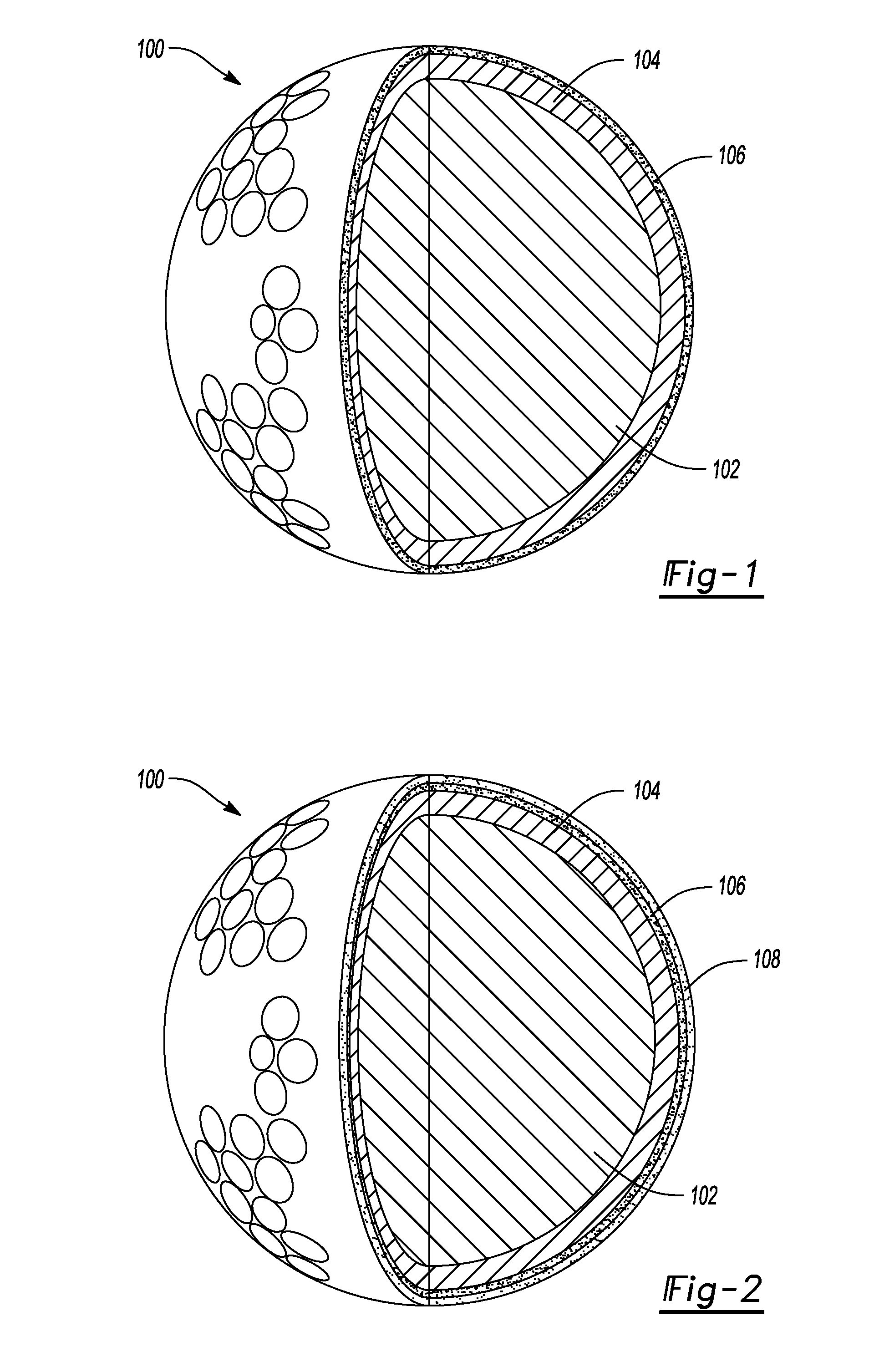Method for dyeing golf balls and dyed golf balls
a golf ball and golf ball technology, applied in the dyeing process, solid balls, sport equipment, etc., can solve the problems of high cost of golf balls with customized pigments, limited customization of golf balls, and significant cos
- Summary
- Abstract
- Description
- Claims
- Application Information
AI Technical Summary
Benefits of technology
Problems solved by technology
Method used
Image
Examples
example 1
[0090]A dye solution was prepared by dissolving Luminous Yellow 8G FF (obtained from Zenith Chemical Industries Limited) at a concentration of 0.2 g / liter in a solution of 75% by weight deionized water and 25% by weight n-propanol to produce a dye solution.
[0091]The following golf balls are dyed in the Luminous Yellow dye solution: (1) a golf ball with a silver metallic coating layer on the cover and a clear polyurethane coating layer over the silver metallic coating layer; (2) a golf ball as described in (1), but with a polyurethane-based silver metallic coating layer; and (3) a golf ball with a polyurethane-based white pearl coating layer and a clear polyurethane coating layer over the white pearl coating layer.
[0092]The golf balls are first washed for three minutes at 40° C. in an aqueous isopropanol wash, then dried. The golf balls are dyed by immersing them for 10 minutes in the dye solution heated to 60° C. The dyed balls have a rich metallic color.
PUM
| Property | Measurement | Unit |
|---|---|---|
| pressure | aaaaa | aaaaa |
| temperatures | aaaaa | aaaaa |
| thickness | aaaaa | aaaaa |
Abstract
Description
Claims
Application Information
 Login to View More
Login to View More - R&D
- Intellectual Property
- Life Sciences
- Materials
- Tech Scout
- Unparalleled Data Quality
- Higher Quality Content
- 60% Fewer Hallucinations
Browse by: Latest US Patents, China's latest patents, Technical Efficacy Thesaurus, Application Domain, Technology Topic, Popular Technical Reports.
© 2025 PatSnap. All rights reserved.Legal|Privacy policy|Modern Slavery Act Transparency Statement|Sitemap|About US| Contact US: help@patsnap.com


